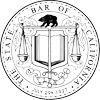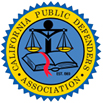Prescription drugs are one of those things that are so prevalent in our society that it is unlikely that have never met anyone who has not taken prescription drugs at one time or another. For the most part, taking prescription drugs is perfectly legal, usually beneficial and, at times, life saving.
However, just because a person can legally obtain, possess, provide and take prescription drugs does not mean that their procurement, possession and use is always legal. Any type of drug that requires a doctor's prescription to obtain is generally highly regulated and tightly controlled. This is especially true for prescription drugs that can impair the person taking them, or lead to addiction and dependency. Opiod pain killers are an obvious example of this type of prescription drug.
It is possible for a person to engage in criminal conduct in relation to, really, each of the three main interfaces between people and prescription drugs; (1) obtaining them (with regard to both the patient and the doctor,) (2) possessing them and (3) using them. For the most part, the criminal prohibitions for these activities are found in the California Health and Safety Code, but there is also some coverage in the Penal Code and Business and Professions Code
With regard to obtaining prescription drugs, it is a crime to forge a doctor's prescription, and it is also illegal to alter a prescription; for example, changing the number of pills the prescription allows from a lower number to a higher number. It is also illegal to obtain a controlled substance by means of false statement or fraud. Doctors can also find themselves being prosecuted if they knowingly prescribe a controlled substance to a patient addicted to the substance.
Possessing a prescription drug is illegal if a person does not have a valid prescription for that particular drug. Even if a person does have a valid prescription for a drug, they could still be committing a crime if they possess a greater number, or greater potency, than is allowed for by the prescription. Of course, if the person does not intend to get a greater number or stronger drugs than is provided for by the prescription, and the pharmacy simply made a mistake in filling the prescription, then there was likely no crime committed.
Finally, a person can end up committing a crime by using prescription drugs and then performing tasks, such as driving a vehicle, when under the influence, and impaired by the prescription drugs. Opiod pain killers would be the best known, and most prevalent type of prescription drug that can lead to this kind of criminal liability; but they are not the only ones. Any prescription drug that is capable of impairing the judgment and/or motor function of a person can lead to a person being deemed "under the influence" of drugs.
Prescription drugs that cannot cause impairment when used as directed, potassium citrate for example, cannot generally result in a person being under the influence, and therefore their use cannot lead to criminal liability. Any drug that is capable of causing impairment can potentially lead to criminal liability, even if used as directed. In that regard, for those types of drugs, it is irrelevant whether or not a person has a valid prescription. In the odd case of prescription drugs that cannot cause impairment when used as directed, but can cause impairment when abused; those types of drugs will not generally lead to criminal liability if used as directed.
It is also illegal to be under the influence of controlled substances, even if they are just sitting at home, if they do not have a valid prescription.
Forging or Altering A Prescription for Drugs:
One of the most serious ways in which a person can find themselves facing criminal prosecution is with regard to the forgery or alteration of a prescription for drugs. There are actually two different statues that cover this particular crime, though neither of them appear in the California Penal Code. The first is Health and Safety Code section 11368, and the other is Business and Professions Code section 4324. While both of these laws criminalize the forgery or alteration of a prescription, each of them is distinct and has its own unique features. While in most cases, the violation of either of these laws results in the commission of a misdemeanor, there are factors which can elevate a violation of either statue to a felony. Crimes of this type, which can be either a felony or a misdemeanor, are generally known as "wobblers."
When we typically think of forgery, we think of a person using Photoshop to create a document, in the case of prescription drug forgery, it is much more common to use authentic documents with forged information.
Typical prescription drug forgery occurs when a person steals a prescription pad, or a prescription from a pad, then fills it out themselves. The crime of forgery is committed whether the prescription document is forged, or merely the information on a real prescription document is filled in by someone other than the doctor listed on the document.
Altering a prescription is somewhat similar to forgery, the only difference being that the person committing the crime actually receives a valid prescription from a doctor, but then changes some of the information on the prescription before attempting to fill it at a pharmacy. While the offender can commit the crime by changing the name of the drug prescribed, it is much more common for the person to change the number of pills provided for in the prescription.
Health and Safety Code Section 11368:
Under Health and Safety Code section 11368, altering or forging prescription is a misdemeanor, and under certain circumstances, a felony. The major distinction between a violation of this statute, as opposed to Business and Professions Code section 4324 is that only forgeries of prescriptions for narcotic drugs trigger the application of the law. These are most commonly opiod pain killers, such as Vicodin and OxyContin, but can be any drug classified as a narcotic.
Business and Professions Code Section 4324:
Business and Professions Code section 4324 has a broader application that its counterpart in the Health and Safety Code. It applies to prescriptions for any type of drug, not just narcotic medications. To be specific, the statute treats any kind of forgery or alteration of a prescription as an act of forgery, so that simply changing the number of pills on a prescription is considered forgery. That said, the penalties are the same regardless of the type and degree of forgery committed.
Examples of Prescription Forgery:
- A person goes to see their doctor, and when their doctor is distracted, they steal sheets from their doctor's prescription pad, later fills them out themselves and submits them to a pharmacy to get opiod pain killers;
- After receiving a prescription for Vicodin that allows for one bottle of pills with zero refills, the patient alters the number of refills from zero to three then attempts to fill the prescription; and
- A person receives a prescription for antibiotics, but before they fill the prescription, they digitally scan the prescription, and then use the image of the prescription to generate forged prescriptions for mineral supplements they want but their doctor won't prescribe.
How Does a Prosecutor Prove Prescription Forgery:
To prove a defendant is guilty of forging or altering a prescription, a prosecutor must prove the following elements:
(1) The defendant altered or forged a prescription; or
(2) The defendant provided a forged or altered prescription to someone else; and
(3) The defendant or another person knowingly attempted to use the forged or altered prescription.
In the case of a violation of Health and Safety Code section 11368, the prosecutor must also prove that the drug the defendant (or other person) attempted to obtain was a narcotic.
Penalties for Prescription Forgery:
For misdemeanor prescription forgery, the penalties are:
- Jail time between 6 months and 1 year; and/or
- A fine of up to $1,000; and
- Up to 3 years summary probation.
For felony prescription forgery, the penalties are:
- 16 months, 2 years or 3 years in county jail or state prison; and/or
- Up to 5 years formal probation.
Health and Safety Code Section 11173 - "Doctor Shopping":
While this code section is generally referred to as the doctor shopping law, as it most commonly manifests as a person seeking treatment from multiple or different physicians to get additional prescriptions for controlled substances; the law that prohibits it, Health and Safety Code section 11173, actually prohibits any sort of fraud, false statement or false identity to obtain a controlled substance.
Among the acts prohibited by the statute are; (1) concealing a material fact to a doctor, (2) making false statements, (3) a person representing themselves to be a person who is authorized to handle controlled substances; and (4) forging or altering the labels on a pill bottle in order to obtain a controlled substance.
As with most other prescription drug crimes, doctor shopping is a wobbler, meaning it can be either a misdemeanor or a felony.
Examples of Doctor Shopping and Prescription Fraud:
- A patient with a prior back injury goes to see their doctor, and tells the doctor they are still experiencing severe back pain, when in fact they are now pain free. On the basis of the misrepresentation, they get a prescription for opiod pain killers;
- After their primary care physician refuses to prescribe pain killers because the doctor believes the patient may be an addict, a patient goes to see another doctor who has never seen them before. They then tell the doctor what they need to hear in order to get a prescription for a narcotic;
- A patient at a hospital sees a pharmaceutical representative, whom they know to carry samples of a controlled substance, steals a lab coat, puts it on and introduces themselves as a doctor, asking for and receiving some of the samples the rep has on them.
How Does a Prosecutor Prove Doctor Shopping and Prescription Fraud:
To prove a defendant is guilty of a violation of Health and Safety Code section 11173, a prosecutor must prove the following elements:
(1) The defendant by means of misrepresentation, fraud, deceit, concealment of fact, false statement or label tampering;
(2) Knowingly obtained or attempted to obtain a controlled substance.
Penalties for Violations of health and Safety Code Section 11173:
For a misdemeanor, the penalties are:
- Jail time up to 1 year; and/or
- A fine of up to $1,000; and
- Up to 3 years summary probation.
For a felony, the penalties are:
- 16 months, 2 years or 3 years in county jail or state prison; and/or
- A fine of up to $10,000; and/or
- Up to 5 years formal probation.
Prescribing Drugs to An Addict:
While most prescription drug crimes apply to the person using possessing or seeking to possess a prescription drug; doctors can also find themselves criminally liable for the act of prescribing controlled substances to someone who is legally defined as an addict. This offense is also a wobbler.
Health and Safety Code section 11156 prohibits doctors, surgeons and nurses from prescribing or otherwise providing controlled substances to an addict. The law also specifically defines the meaning of the term "addict." An addict is defined as a person who has (1) a craving for one or more specific controlled substances and (2) either uses the substance compulsively, is unable to moderate their use or continues to use the substance after it becomes harmful to them.
There are a number of exceptions to the law, found in Business and Professions Code section 2241. Without describing each and every one of these exceptions in detail, they can generally be understood to allow doctors, surgeons and their nurses to prescribe or otherwise provide controlled substances to an addict if their reason for doing so has a medical purpose, in the course of an addict's treatment as a patient.
How Does a Prosecutor Prove Prescribing Drugs to an Addict:
To prove a defendant is guilty of a violation of Health and Safety Code section 11156, a prosecutor must prove the following elements:
(1) A doctor, surgeon or authorized nurse administered, dispensed or prescribed a controlled substance;
(2) To an individual that is a addict of the controlled substance; and
(3) The controlled substance was not administered, dispensed or prescribed for a valid medical purpose.
Penalties for Prescribing Drugs to an Addict:
For a misdemeanor, the penalties are:
- Jail time up to 1 year; and/or
- A fine of up to $1,000; and
- Up to 3 years summary probation.
For a felony, the penalties are:
- 16 months, 2 years or 3 years in county jail or state prison; and/or
- A fine of up to $20,000; and/or
- Up to 5 years formal probation.
Illegal Possession of Prescription Drugs:
Possession of certain prescription drugs, unless pursuant to the valid prescription of a doctor or surgeon, is prohibited by Health and Safety Code section 11350. This does not apply to all prescription drugs, but rather only those drugs which are classified as controlled substances or narcotic drugs. Much like most of the other prescription drug offenses, illegal possession is a wobbler, exposing the offender to misdemeanor charges unless the circumstances warrant a prosecutor to charge the offense as a felony. However, since the passage of Prop 47 in 2014, the only way a prosecutor can charge possession crimes as a felony is if the defendant has prior convictions for rape, murder, and certain sex and firearm offenses. If the defendant does not have this kind of prior conviction, they can only be charged with a misdemeanor, and will likely have access to either drug diversion programs, or other remedies that can result in the criminal charges being dismissed.
Even if a person has or had a valid prescription for the drug, they may still violate the law and can be charged if they possess the drugs in greater quantities than the prescription permits.
While possession of prescription drugs certainly includes having them on your person, or in your home; it also includes any situation where the person has control over them. A good example of this would be if the individual keeps the drugs in the trunk or back seat of their vehicle.
How Does a Prosecutor Prove Illegal Possession of Prescription Drugs:
To prove a defendant is guilty of a violation of Health and Safety Code section 11350, a prosecutor must prove the following elements:
(1) The defendant was in possession of a useable amount of controlled substance;
(2) The defendant knew they were in possession of the controlled substance, and knew it was a controlled substance; and
(3) The defendant did not have a valid prescription for the controlled substance.
Penalties for Illegal Possession of Prescription Drugs:
For a misdemeanor, the penalties are:
- Jail time up to 1 year; and/or
- A fine of up to $1,000; and
- Up to 3 years summary probation; or
- A drug diversion program under Penal Code Section 1000.
For a felony, the penalties are:
- 16 months, 2 years or 3 years in county jail or state prison; and/or
- Up to 5 years formal probation.
Being Under the Influence of Prescription Drugs:
There are two different laws that prohibit a person from being under the influence of prescription drugs; California Vehicle Code section 23152 and Health and Safety Code section 11550.
Vehicle Code section 23152 prohibits operating a motor vehicle under the influence of a drug. It is illegal to operate a vehicle under the influence of a drug, even if the person has a valid prescription. The conduct that is prohibited is operating the vehicle without the normal caution of a sober person, while under the influence of a drug. Violation of Vehicle Code section 23152 is a misdemeanor, though if a person is convicted of the offense multiple times, additional penalties will apply.
Health and Safety Code section 11550 is, in some ways, more broad than Vehicle Code section 23152, and in other ways more narrow.
It is broader because the section prohibits being under the influence of a controlled substance under any circumstances, not just while operating a motor vehicle. This means that even if a person is sitting in front of the TV at home, they are still in violation of section 11550 if they are under the influence of a controlled substance.
The law is more narrow in the sense that if a person has a valid prescription for the controlled substance, then they do not violate the law. However, the law does place the burden on the individual to prove that they have a valid prescription, issued by their doctor, surgeon or someone lese authorized to prescribe the controlled substance.
How We can Help:
David Foos has over 40 years’ experience representing those accused of prescription drug violations. David practiced as a Deputy Public Defender for 8 years where he helped numerous clients charged with prescription drug crimes. After his practice as a public defender, David was appointed to the bench as a Commissioner of the Sacramento Superior Court. In this position, David was a judicial officer who heard many cases involving prescription drug crime allegations. Now, for the last 11 years David has been in private practice in which he has defended hundreds of people accused of crimes. David has extensive knowledge of criminal law and has important contacts in the field. David will use all his training, experience, and network to obtain for you the best possible result on your case. Call our Sacramento criminal attorney for a consultation at no cost to you at 916-779-3500, or reach us on the internet at Contact@foosgavinlaw.com.















